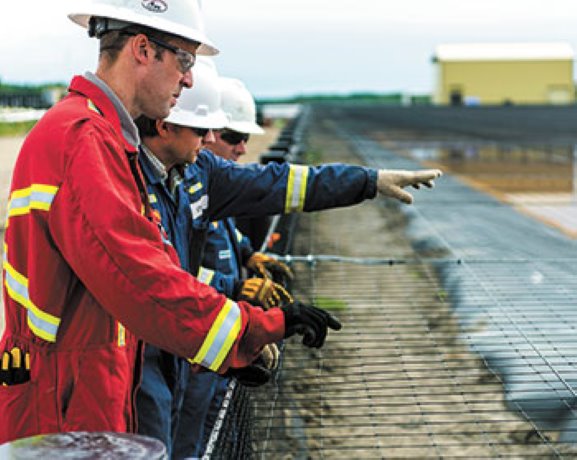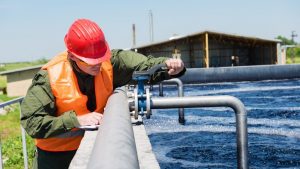In a nation blessed with abundant water supplies it seems strange that water conservation is critical to the development of Canada’s oilsands and by extension the economy itself.
Yet, water is top of mind in Alberta and British Columbia where oilsands and shale gas development have prompted tighter regulations around fresh water draws and treatment of waste water.
Oilsands fresh water use in 2012 was about 187 million cubic metres according to the Canadian Association of Petroleum Producers (CAPP). That’s about 40 per cent of the City of Toronto’s annual water consumption
In the Peace River area around Dawson Creek, B.C., the water table is fed by rain.
Dry season water shortages are a serious issue so any industry, which draws water, comes under intense scrutiny.
Shell Canada’s Groundbirch natural gas project in northeast B.C. is no different.
The resource is about 45 kilometres west of Dawson Creek and involves hydraulic fracking which is a big draw of water.
To offset that draw and to demonstrate its commitment to sustainable extraction, Shell Canada came up with an innovative and unusual solution when the City of Dawson Creek published a request for proposals for a new waste water treatment plant.
Shell proposed it would build the plant and pay more than $11 million of the cost while the city put up $1.5 million.
Additionally Shell would build a 48-km water pipeline to take the treated water back to Groundbirch.
The proposal was accepted and the plant, which treats sewage from the city using a microbacterial filtering system opened in 2012.
For Shell the timing was perfect. That summer Dawson Creek — which sold 20 to 25 per cent of its water to the oil and gas sector — was in the middle of a drought.
Despite the loss of income, the city was forced to cut off water sales to the energy sector.
Having dodged the cut, Shell’s operations are well underway at Groundbirch, while Dawson Creek has relieved much of the pressure on its water supply.
So far so good, says Patty Richards, a communications officer with Shell who was assigned to that sector at the time.
“I hate to say things like win-win because it sounds like such a cliché but really it was because the first benefit for Dawson Creek, aside from the treatment plant, was that we took all these trucks off the road which really cut the noise, dust and traffic for local residents,” she said.
The new plant brought Dawson Creek’s discharge up to higher effluent standards and created a slight excess since Shell takes about 3,400 cubic yards of water daily from the 4,000 flow through capacity.
That surplus is used for city parks and sports fields and is sold to industry.
The water pumped to Groundbirch goes into a closed loop system which recycles most of the draw back into settling pond for reuse, further reducing fresh water consumption.
The outcome has been a public relations win for Shell and the industry but more than that, said Richards, it’s also been a source of pride for employees.
“For the employees it is proof that this is how we can operate,” she said, noting it also ties in with Shell’s program around what they call the “stress nexus” which is a strategy and recognition around the relationship between food, energy and water.
Energy development generally needs water which also is needed for food and managing that nexus requires a wholesale rather than an isolated approach.
Shell’s position is that the work will need more of all three and that managing the relationship will be more critical for both government and industry in the future.
The stress nexus and the learning from the Dawson Creek project is something Shell hopes to use and leverage in future projects in the 138 countries it operates in, she added.
The company is now buying waste water from the sewage lagoons in the Alberta town of Edson where they also have a fracking project.
In January, it also signed an agreement with Fox Creek, where its Carmon Creek project is just getting started to purchase the towns treated waste water.
Additionally, Shell will pay for an engineering and design study to upgrade and expand the town’s raw water facilities while also exploring new groundwater wells a new pipeline construction.











Recent Comments
comments for this post are closed